
Feel free to add tags, names, dates or anything you are looking for
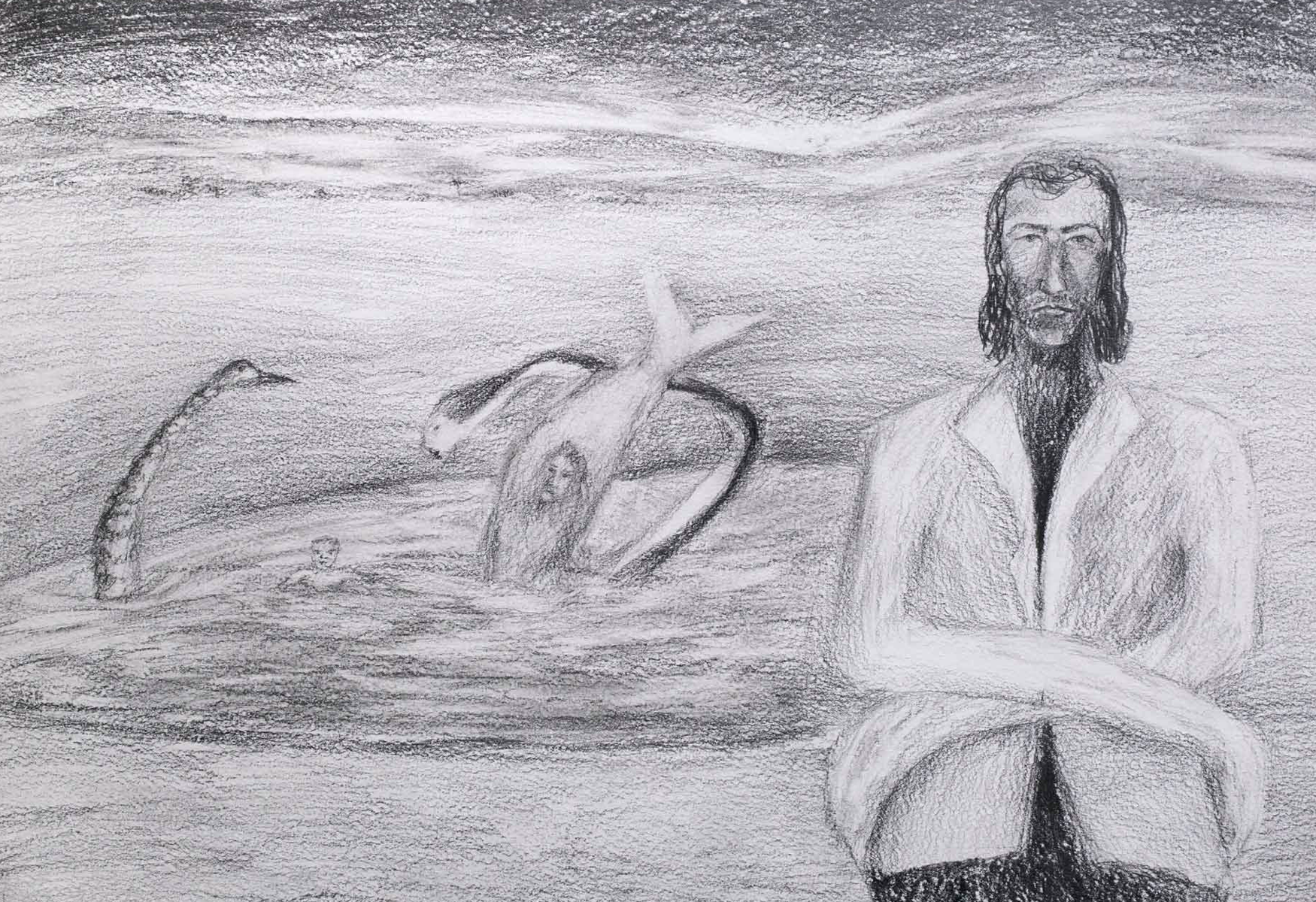

On 23 April, TornikeRobakidze’s solo show was launched in gallery 4710. The name of the exhibition already promises us something about the celestial realm, but while doing so, it also reveals a kind of melancholy and doubt. What has sadness to do with paradise? On entering the gallery, one sees entire walls covered with pencil sketches/drawings. It's hard to define them as graphic, they mostly resemble drawings scratched onto walls, something one usually finds in Tiflis’ buildings, jails, or on the walls of stations and other public places. Such a circumstance raises critical questions about the concept of paradise, about above and below, the sacred and the profane. An issue which has been driving the local city culture, mainly its literature, poetry and painting, for almost 150 years.
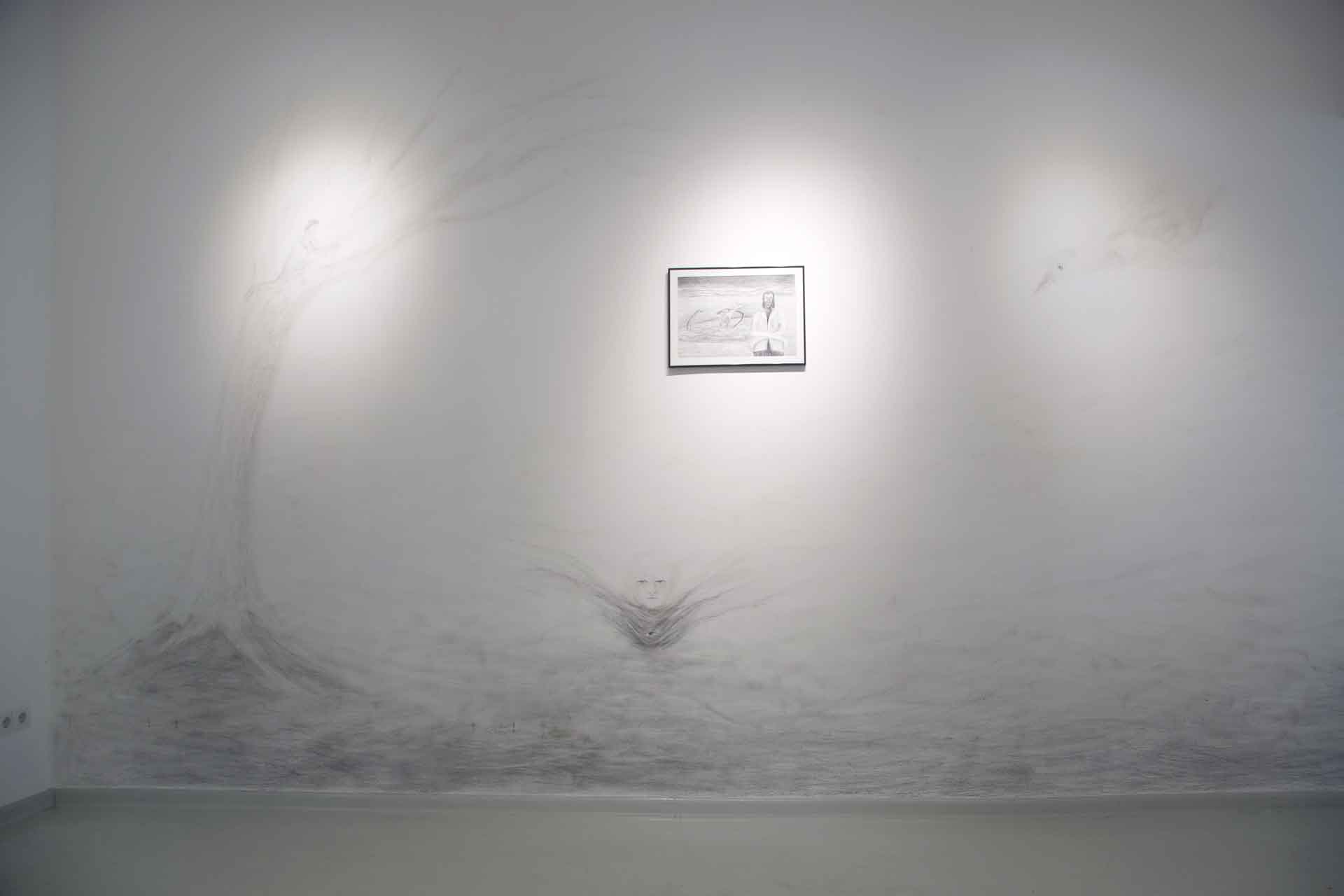
Tornike Robakidze - Untitled 40x50 Paper/Pencil. 2021. Gallery 4710
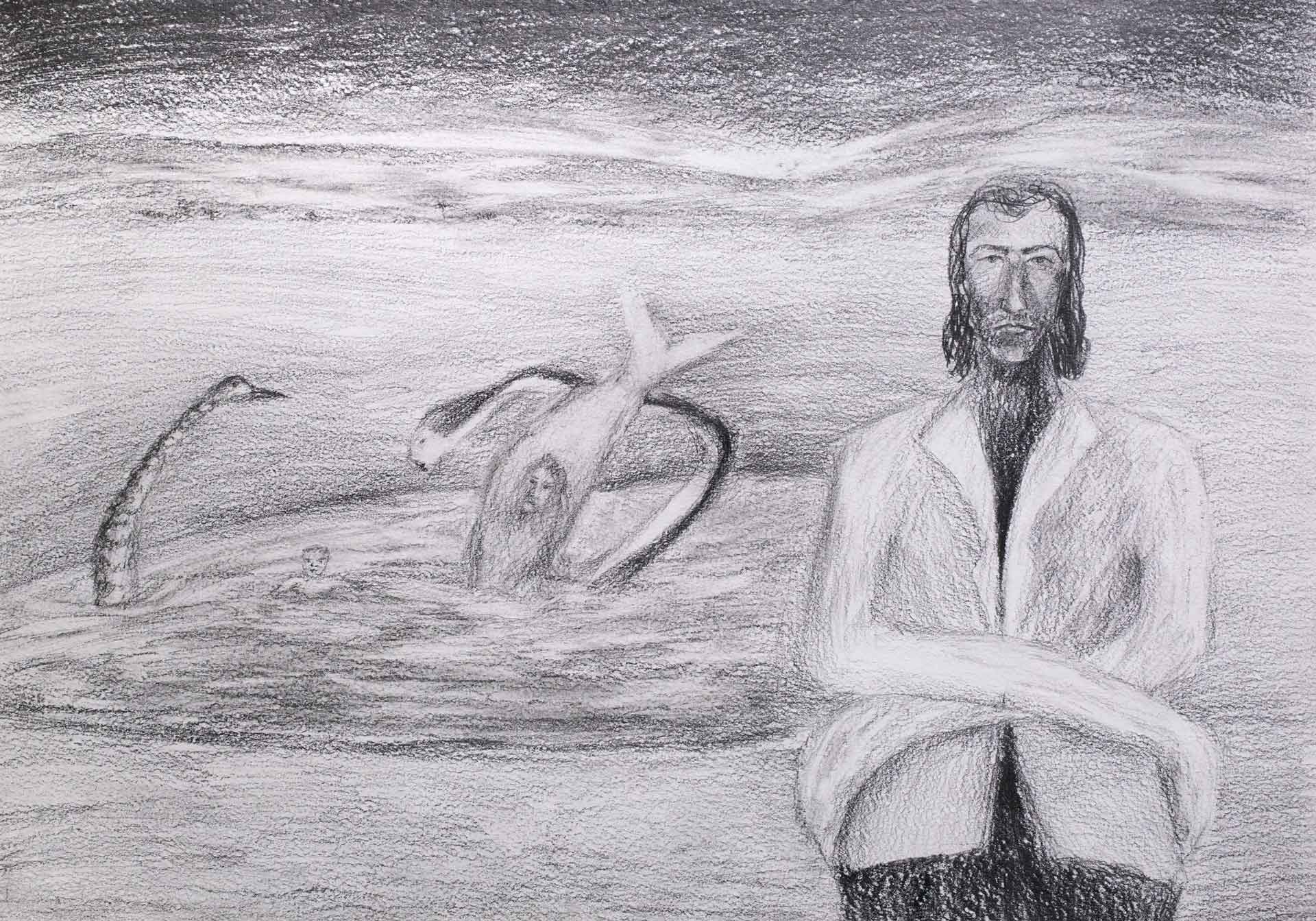
Tornike Robakidze - Untitled 40x50. Paper/Pencil. 2021
Over the past two years, the founders of 4710 declared an open interest towards mythological directions in contemporary Georgian art. One should also admit that when speaking of Georgian identity, the latter is rooted in the avant-garde of redefining ethnicity and historical values. It is also hard to speak of those artists as a generation, since they hail from different backgrounds, they experiment in different media and manifest asymmetric aspects of regional culture; nevertheless mythology and redefinition of cultural memory is something that unites their reflections. In Tornike’s case, we encounter familiar images, maybe even symbols, which were born back in the period of Pirosmani and afterwards. These symbols include: a deer, an angel, a swan, animalistic symbiosis, holy-terrestrial hybrids: in other words floating identities embedding themselves in the collective memory. They unfold collective fears, moments of transition, becoming, diabolical energies coming from an unknown space, another characteristic of Georgian culture, which seals the relation between the image and the soil. All those insights are combined in a form, which as already mentioned, unfolds itself through a profane, everyday language. Here we meet, possibly, the main conflict of the scenario: the conflict between individual and society. The artist chooses to relegate the conflict to another dimension (something also very familiar to Georgian avant-garde), maybe to a more symbolic and romantic space – one that consists of social patterns and individual gestures. In this field the conflict is reanimated. We have a kind of second order of images, but in the absence of anything visually pretentious. Almost zero energy is spent on the representation of power;
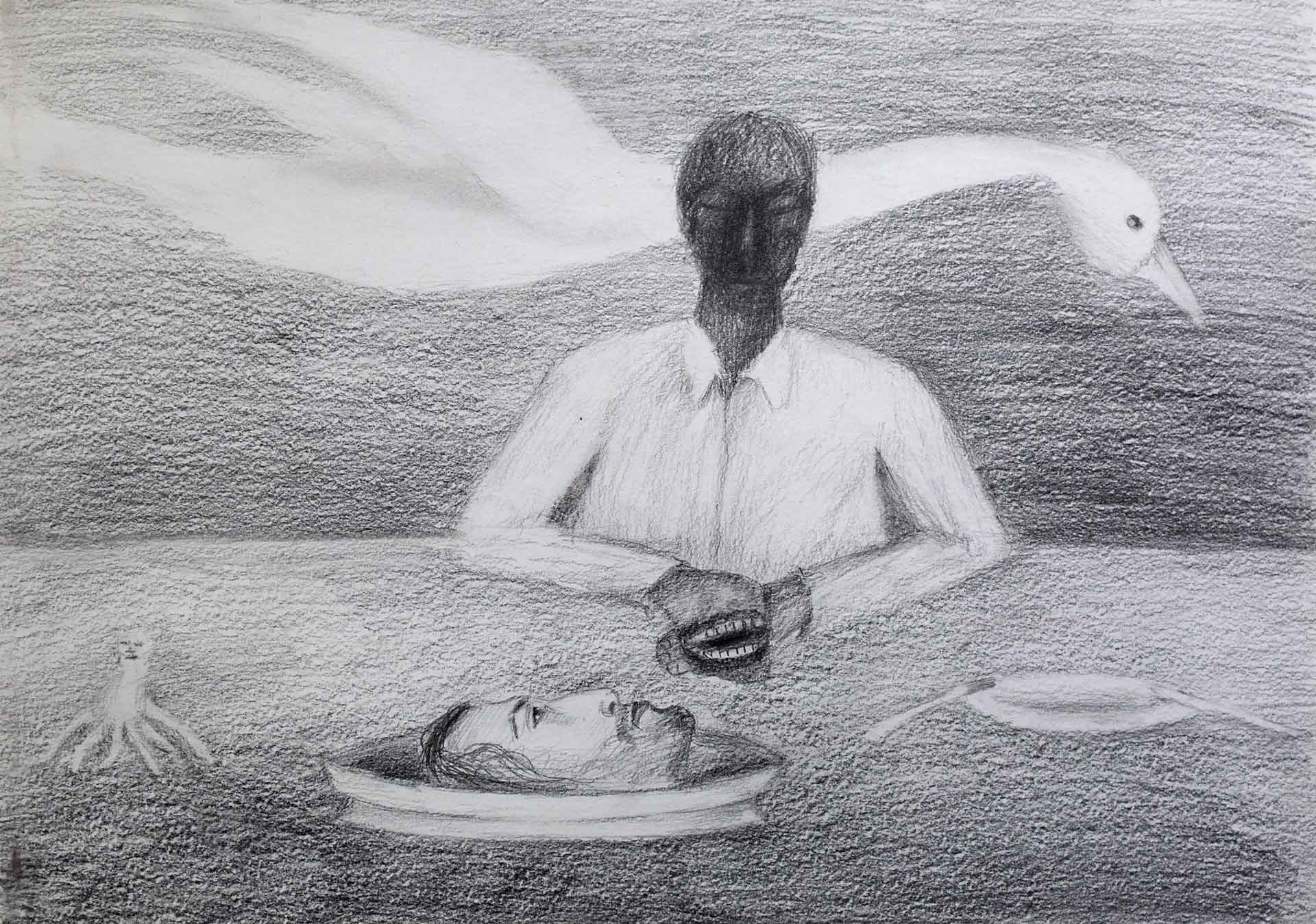
Tornike Robakidze - Untitled. 40x50. Paper/Pencil. 2021
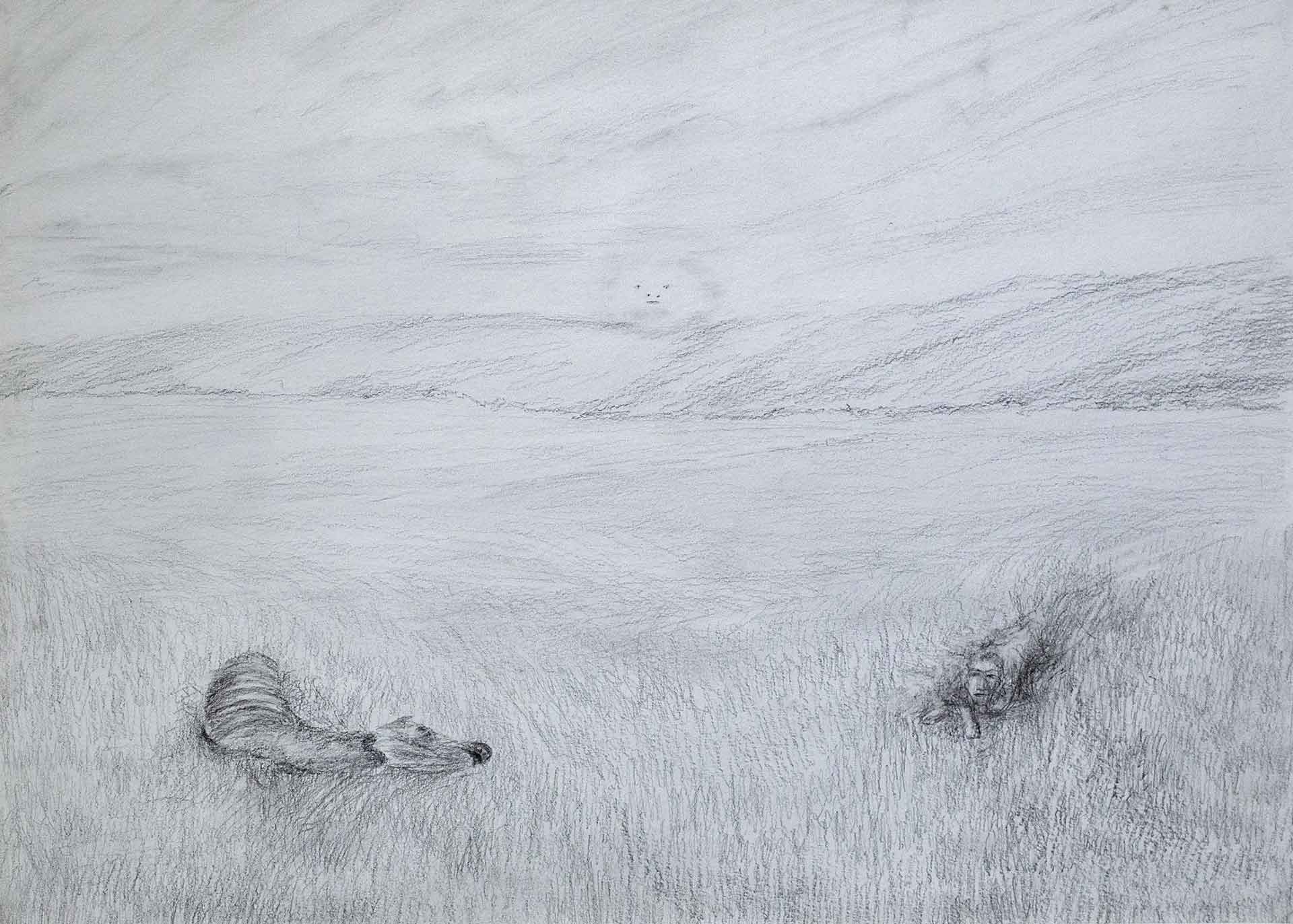
Tornike Robakidze - Untitled. 40x50. Paper/Pencil. 2021
Forms are freely levitating, naive, released from the dominance of an artistic hand. Only when we come closer to the paintings do we notice the intensively scratched surface, which resists homogenization. Another contradiction we encounter in the show appears in the poetry series. Among the scratched sentences one cannot locate where the individual action takes place and where the text as objective example dissolves. Is it the erasing process which makes it original, or is it the uncertainty of the words that plays the key role in individualization? Even after artistic intervention, the works remain strictly deauthorized and depersonalized. The same goes for the paintings. Scratched-like aesthetics, which can be found everywhere in Tbilisi, incorporate divergent public sources directly into graphic art. This results in a strange symbiosis, something that doesn't even manifest itself as an artwork, but as an immediate creative action drawn from exchanges between society and the individual.
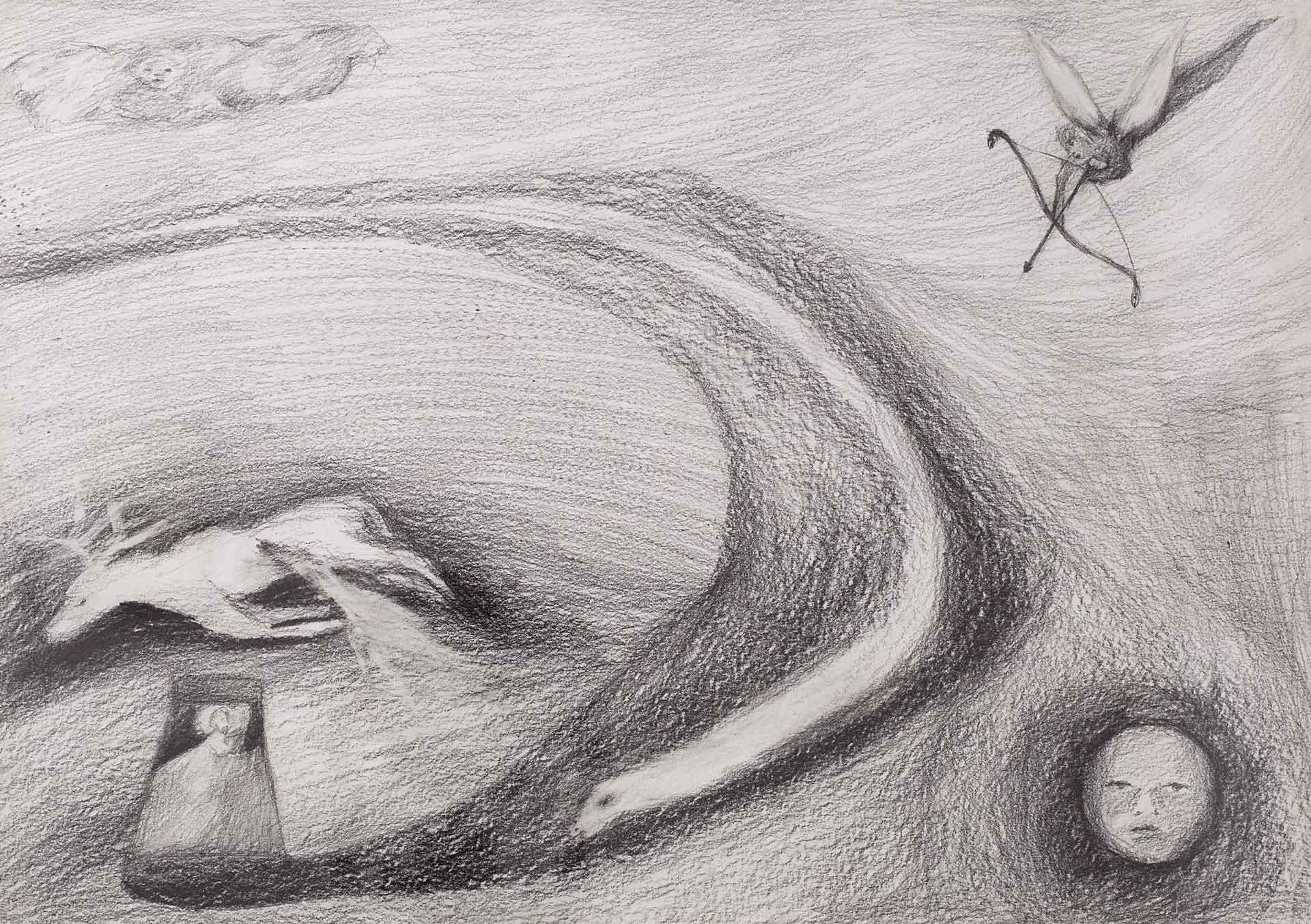
Tornike Robakidze - Untitled 40x50. Paper/Pencil. 2021
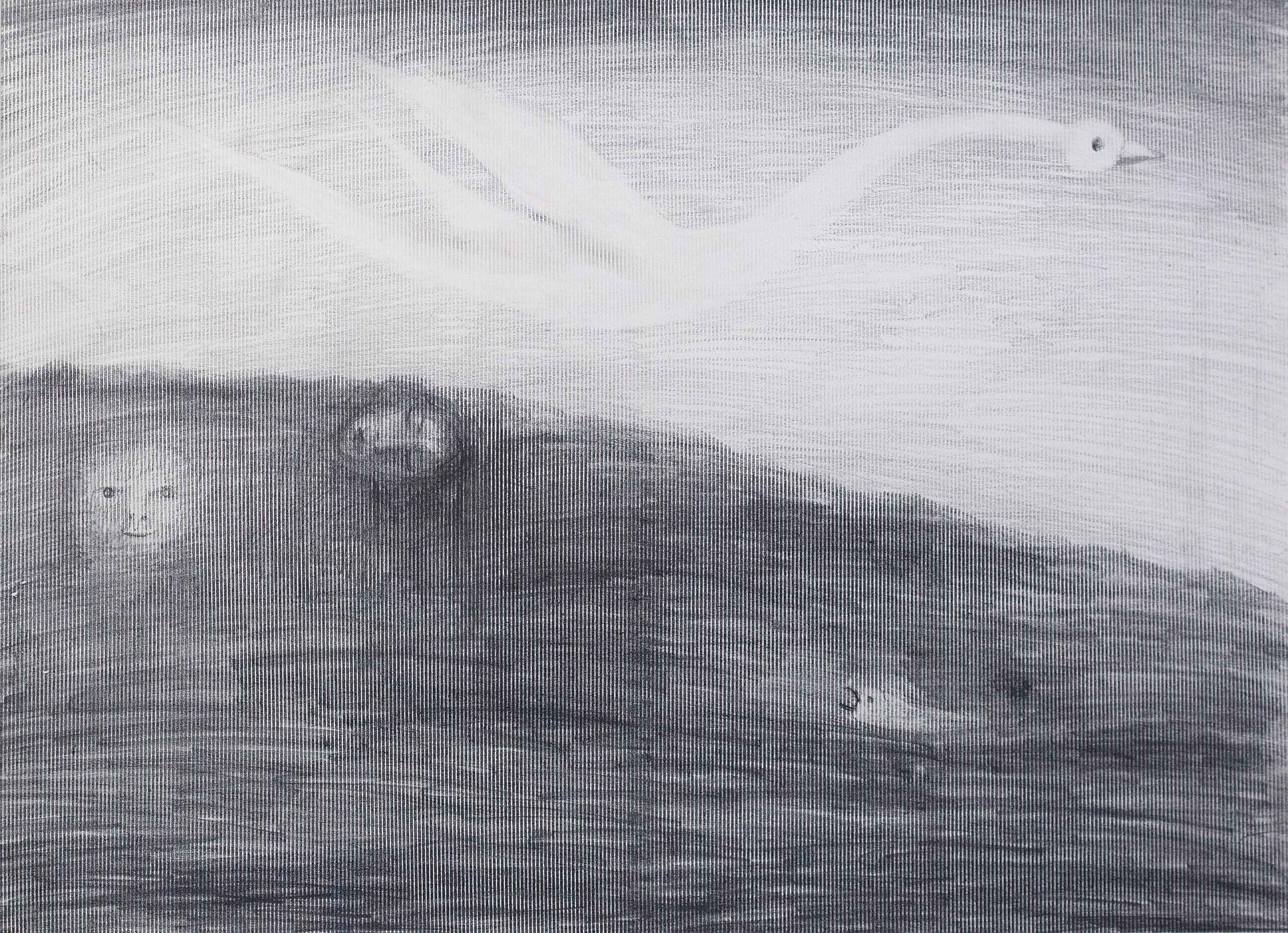
Tornike Robakidze - Untitled 40x50. Paper/Pencil. 2021
A small book of poetry was launched together with the exhibition. In fact the name of the exhibition is derived from a poem. All the poems exhibited among the wall paintings are now presented under the authorship of the artist. Here the conflict seems resolved, which adds another layer to the exhibition. Georgian art, which already for two centuries has been striving to gain its place on the global contemporary art map, is finally emerging from the realm of folk culture. On one hand it maintains this transitional connection between social aesthetics and individual gestures, while on the other hand it gives way to a more individualist space, something that promises us the rapid development and realization of a new generation.
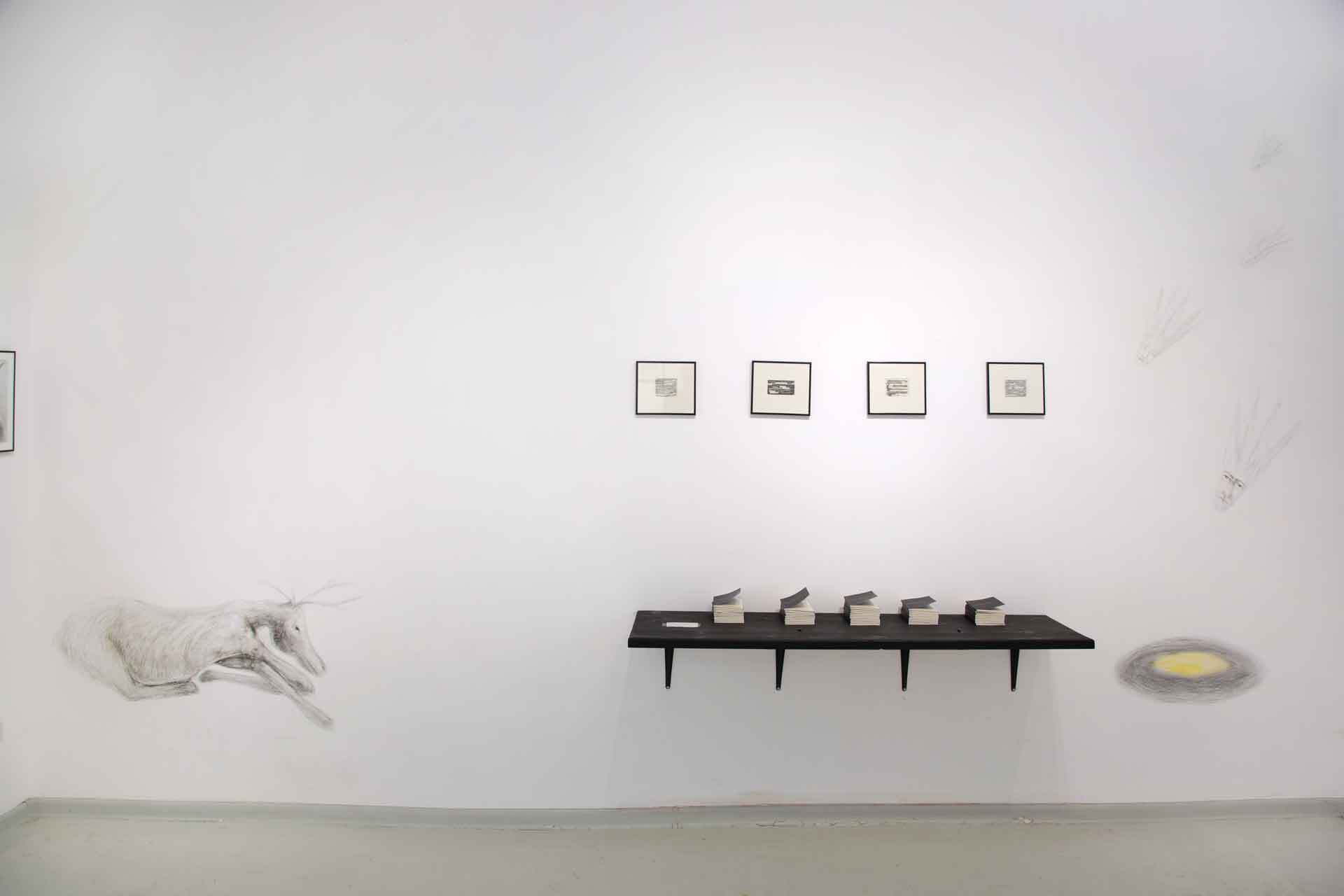
Gallery 4710
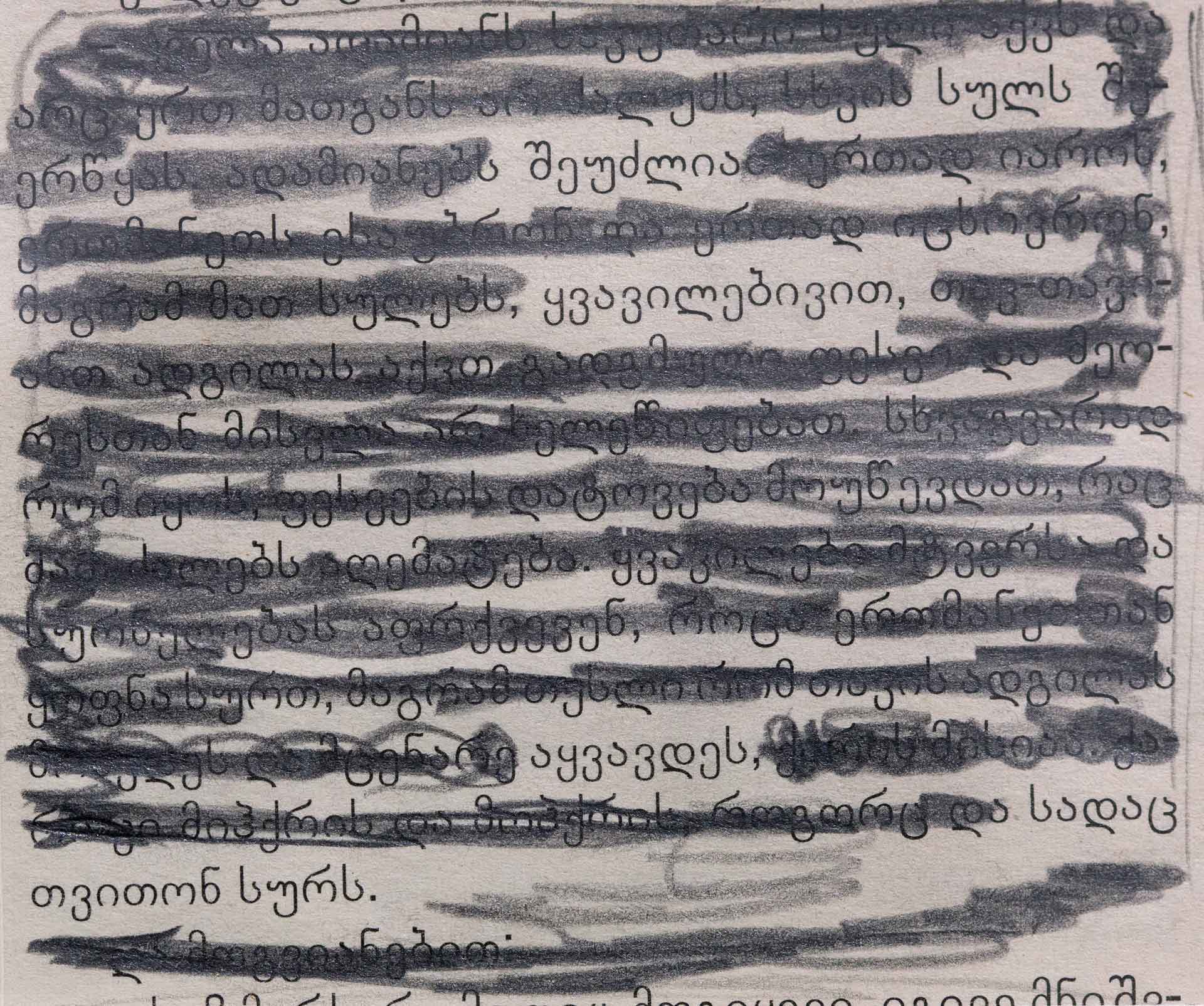
Tornike Robakidze - Untitled.21.5 x 19 Newspaper/Pencil. 2020

Untitled.21.5 x 19 Newspaper/Pencil. 2020
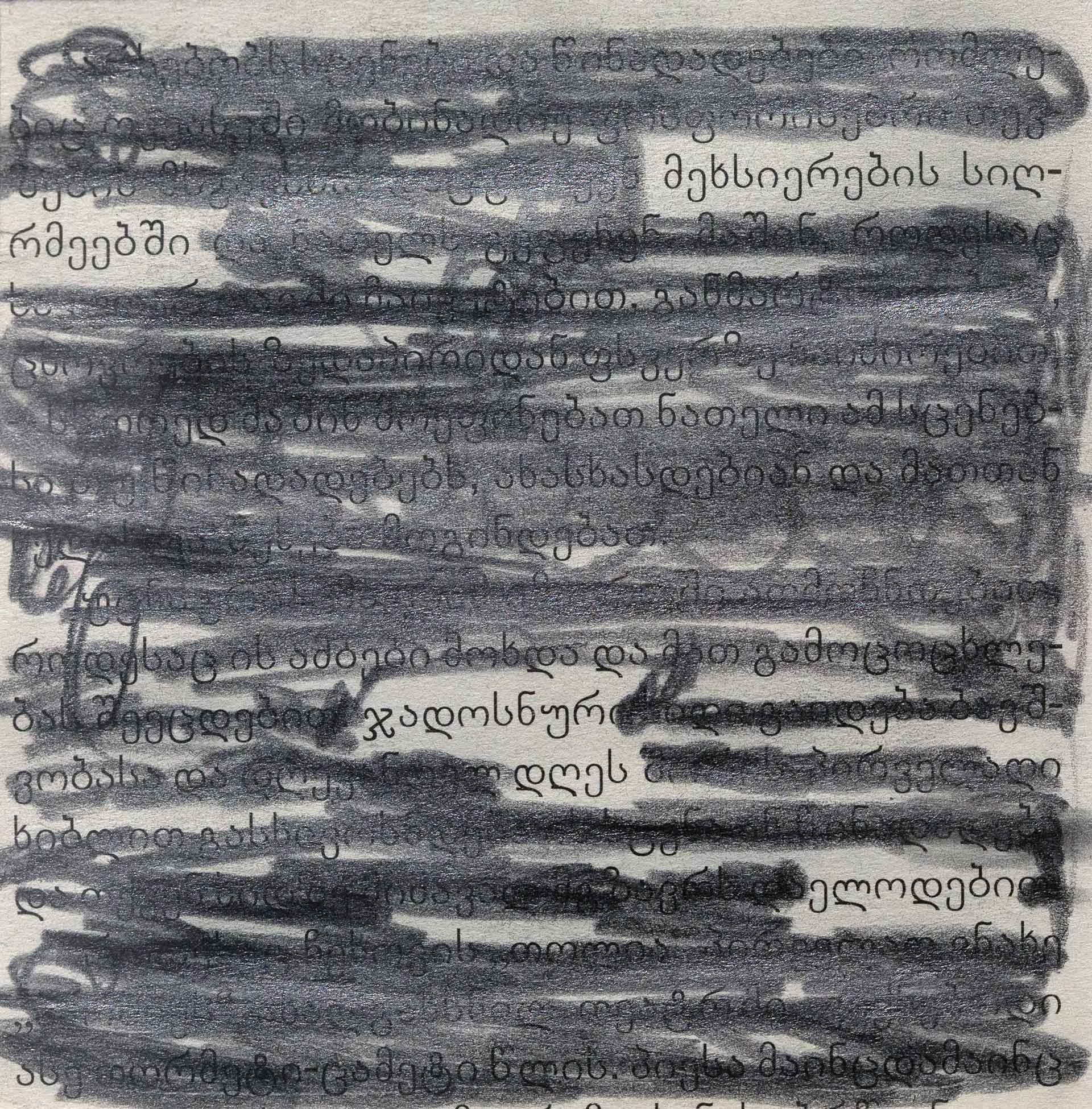
Untitled.21.5 x 19 Newspaper/Pencil. 2020
Perhaps, after all, the sadness the artist experiences is derived from this
separation of the individual from his natural soil? Something that also gives
him a feeling of paradisiacal levitation? The momentum of detachment, which
results in an inevitable becoming.